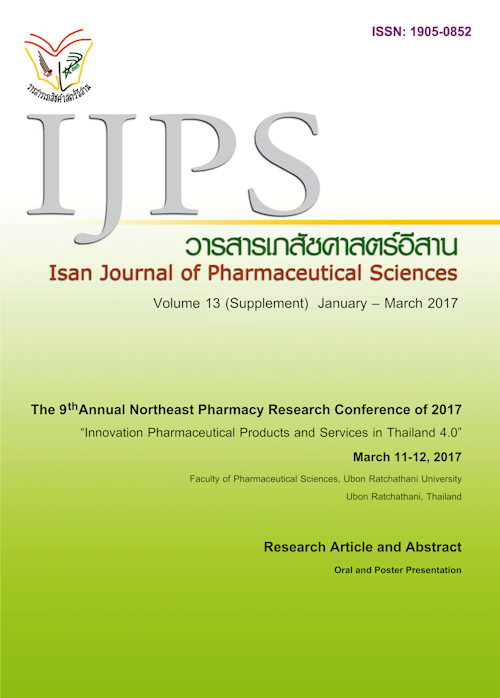Explanatory Model Based on Perceptive of Patient with Chronic Obstructive Pulmonary Disease
Main Article Content
Abstract
Introduction: The model explaining the illness was a model created by the view of the patient's illness occurred. Which involved by faiths, cultures, and experiences. This study aimed to describe and determine the difference between models explaining the illness of patients with COPD. Methods: This study was a qualitative study. Data from 18 informants were collected by in-depth interviews that including 10 controlled and 8 uncontrolled were recruited from COPD clinic at Kabinburi hospital during April to September 2015. Results: Both groups of informants created models to explain the illness similarly by faiths and experiences of their illness. For example, naming were mostly followed by medical personnels. The first call of the disease was emphysema. However, details of perception of illness were different between controlled and uncontrolled patients. Furthermore, they understand the causes of the illness that mainly derived from their past behaviors. The main symptoms of the disease include coughing, suffocation, wheezing, and dyspnea. So, they recognized the severity of the disease varies according to their experiences. In a group of patients who can control the symptoms. They believed that the disease was not serious. Unlike other patient groups who realized the importance of taking medicines and behavior modification to control the risk factors. Also seeking alternative treatments such as herbs. Both groups of informants have a different assessment of the disease from medical personnels. They evaluated by a focus on feelings such as relief breath and ability to do activities in daily life. Conclusion: Both groups of informants created models to explain the illness similarly. In some difference explanations were caused by the influence of faiths and experiences. Therefore, healthcare providers have an important role in understanding the model. To bring development to the treatment of patients. The results were further improved.
Article Details
In the case that some parts are used by others The author must Confirm that obtaining permission to use some of the original authors. And must attach evidence That the permission has been included
References
Boonsawat W, Chronic Obstructive pulmonary Disease: Pharmaceutical care of Asthma Sinusitis Allergies and Chronic Obstructive Pulmonary Disease.1 st ed. Khonkean: KrangNaNa Wittaya Publisher; 2010.
Chanthapasa K. The analytical model to describe the illness and treatment options in the context of power relations between patients and providers [Master of Pharmacy]. Bangkok: Chulalongkorn University; 2004.
Chomputhat S. Factors Relating to Relapse in Chronic Obstructive Pulmonary Disease [Master of Pharmacy]. Chiang Mai: ChiangMai University; 2007.
Global Initiative for Chronic Obstructive Lung Disease. GOLD 2017 Global strategy for the Diagnosis, Management and Prevention of COPD [Online] 2016 [Cited 2016 Jan 10]. Available from: http://goldcopd.org/gold-2017-global-strategy-diagnosis-management-prevention-copd/.
Good BJ. Medicine, rationality, and experience. An anthropological perspective. Cambridge, UK. Cambridge University Press, 1994: 48-52.
Kleinman A. Patients and healers in the Context of culture. London: University of California; 1980.
Loignon C, Bedos C, Sevigny R, Leduc N. Understanding the self-care Strategies of patients with asthma. Patient Education and Counseling [Serial online] 2009; 75(2): 256-262.
WHO, Burden of COPD [Online]. 2015 [Cited 2015 May 20]. Available from: http://www.who.int/respiratory/copd/burden/en/.


